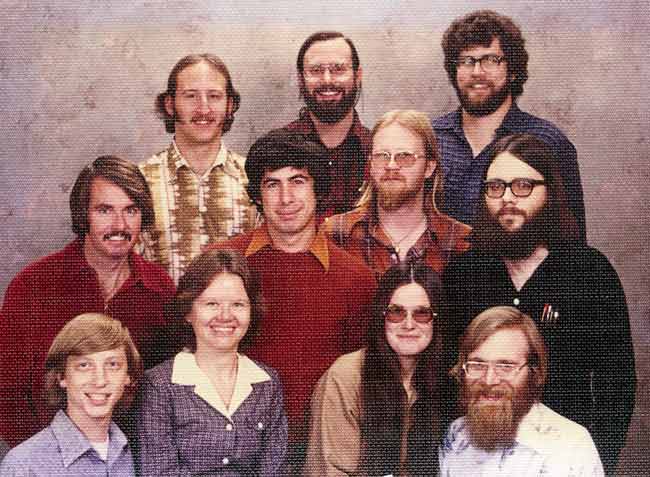Microcomputer Exhibit to Open in Microsoft Birthplace

Microsoft co-founder, Paul G. Allen, announced today plansfor a museum exhibit in Albuquerque,NM , which will document thehistory and impact of the microcomputer. The 3,000-square-foot MicrocomputerGallery is scheduled to open to the public in 2006 and will be housed in theNew Mexico Museum of Natural History and Science.
Albuquerque is considered a historical landmark in thedevelopment of the personal computer, as it was here that the first publicly availablemicrocomputer, the Altair 8800, was manufactured, and it was here where Allenand Bill Gates started Microsoft back in 1975.
This is not Allen's first museum project. He founded theExperience Music Project and the Science Fiction Museum and Hall of Fame inSeattle. He is also the financialbacker of SpaceShipOne, which is vying to be the first commercial spacecraft totake the public into low-Earth orbit.
"For all of the museums that I have been involved in, thereis a theme that everyone, especially young people, can express theircreativity," Allen said. Whether that creativity comes out inentrepreneurialism or space travel, he said, "that's the spirit I want toencourage."
Adrian Hunt,director of the museum, likened the choice of Albuquerque to havingthe "aviation museum at Kitty Hawk." But Allen had more personal reasons: "Ialways had a fondness for the area."
Microcomputer Beginnings
The nascent home computer industry had its humble beginningsin the Cal Linn building near the New Mexico state fairgrounds. Ed Roberts ran a calculator company there inthe mid-1970s called MITS (Micro Instrumentation and Telemetry Systems) thatsold an Altair do-it-yourself kit for around $400, or an assembled version forabout a $100 more.
Get the Space.com Newsletter
Breaking space news, the latest updates on rocket launches, skywatching events and more!
The Altair was based on a 2MHz Intel 8080 processor. The machine had no keyboard or monitor orsoftware, just switches and blinking lights. Even though seemingly useless, there were thousands of orders fromhobbyists and scientists in the first few months of its availability.
"This was the first computer that caught people'simagination, because it allowed them to say, 'Gee, I can own my own computer,'"Allen said. "The inexpensiveness of itcaused a groundswell."
The Altair was put on the cover of Popular Electronics inJanuary 1975, which caught the attention of Allen and Gates, who were at thetime 21 and 19 years old, respectively. They approached MITS with a proposal todevelop the BASIC computer language for the Altair.
When Allen successfully demonstrated their program toRoberts, he was given a job. Gates leftHarvard University to join Allen in Albuquerque. They received free space inthe MITS office while they developed software.
"We would program until we couldn't stay awake anymore,"Allen said. He recalled a late-nightDenny's restaurant near the Cal Linn building that he and Gatesfrequented. "Bill just loved Denny's,"Allen said.
Allen and Gates later separated themselves from MITS,forming one of the world's first software companies, Microsoft. They moved operations in 1979 fromAlbuquerque to Bellevue, WA. Allen leftthe company in 1983.
Allen had considered placing a computer museum in the CalLinn building, but the logistics turned out to be too difficult for thatlocation. Instead, the MicrocomputerGallery will reside about 15 minutes west -- down historic Route 66 -- at thenatural history museum.
Computer Dinosaurs
The NMMNHS has about a quarter of a million visitors peryear. Because many fossils have been found in the state, the exhibits tend tofocus on dinosaurs, but the museum also covers topics like cosmology and spaceexploration.
"Most of our exhibits deal with the evolution of the universeand life, so the Microcomputer Gallery will fit in as the evolution of thecomputer," Hunt said. He also mentionedthat computers are vital to much of the latest advances in paleontology andother sciences.
The proposed gallery will trace the computer revolution fromlarge vacuum tubes to handheld devices. There will be interactive elements that will allow users to experiencewhat it is like being a software programmer, and there will be displays showinga mix of the early "dinosaurs" - including, of course, the Altair.
The cost of the project is estimated at $5 million, the bulkof which will come from Allen. The Billand Melinda Gates Foundation has offered $1 million and the nonprofit NewMexico Museum of Natural History Foundation is seeking other donations.
"The commitment has been made by the museum and thedepartment to have a permanent exhibit," said Secretary Stuart Ashman of theNew Mexico Department of Cultural Affairs.
Ashman went on to say that, "New Mexico is often thought ofas an outback," but he believed the state has many intellectual contributions,including two National Laboratories, as well as Intel Corp.'s largest chipmanufacturing facility. "The [gallery] fits into the kaleidoscope of thisactivity."
Join our Space Forums to keep talking space on the latest missions, night sky and more! And if you have a news tip, correction or comment, let us know at: community@space.com.

Michael Schirber is a freelance writer based in Lyons, France who began writing for Space.com and Live Science in 2004 . He's covered a wide range of topics for Space.com and Live Science, from the origin of life to the physics of NASCAR driving. He also authored a long series of articles about environmental technology. Michael earned a Ph.D. in astrophysics from Ohio State University while studying quasars and the ultraviolet background. Over the years, Michael has also written for Science, Physics World, and New Scientist, most recently as a corresponding editor for Physics.









